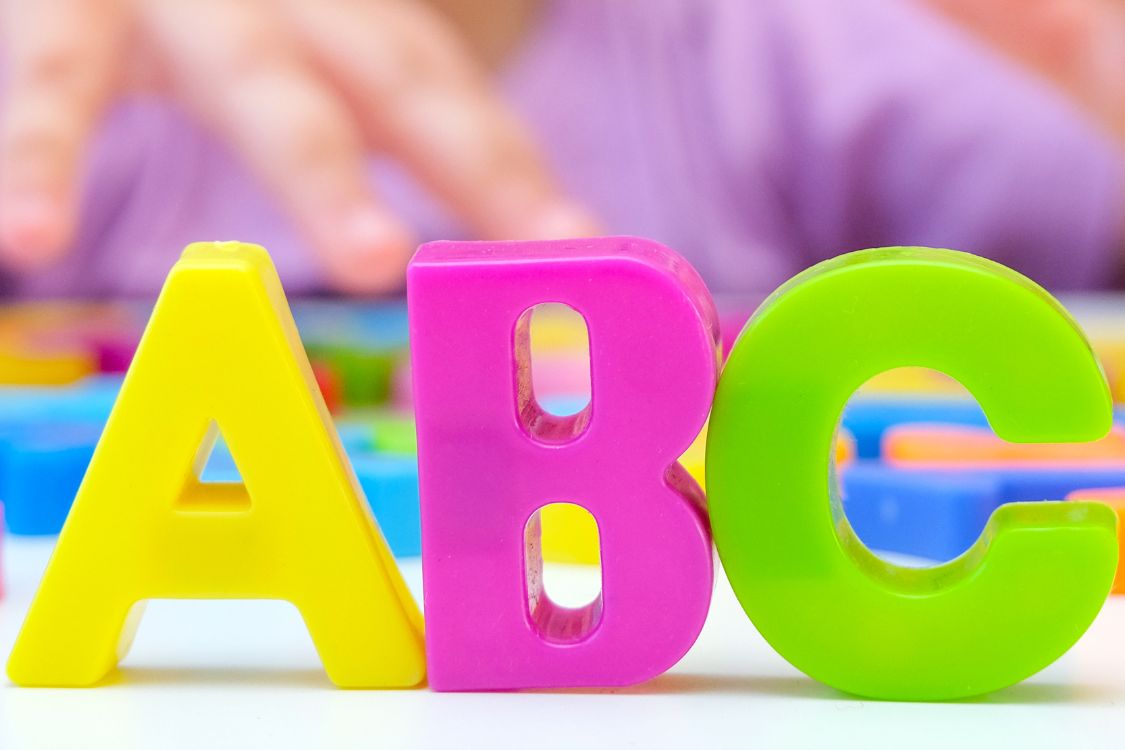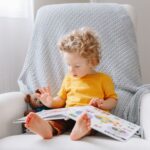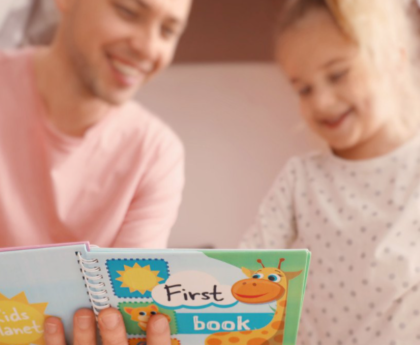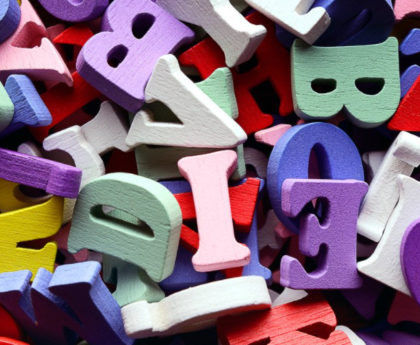The term concepts of print, also called print concepts, broadly refers to a child’s earliest understanding of written language and its purpose. It’s a term that’s helpful for you, as a parent or educator, to be familiar with when introducing kids to reading.
In early literacy development, children gain several print concepts and begin to connect them with items in daily life. They notice environmental print which includes symbols, signs, letters, and logos in their natural surroundings. Environmental print reinforces children’s understanding of concepts of print: written language has meaning that can be deciphered through reading and is useful in the real world.
To learn more about concepts of print and environmental print, here’s a crash course to help you support your child’s literacy journey. Read to the end for some fun practice exercises!
What are Concepts of Print?
In more technical terms, concepts of print are fundamental “rules” of text learned in early literacy. Children learn concepts of print through interactive examples and instruction from adults in their lives.
Types of concepts of print in emergent reading include that of text, books, directionality, mechanics, and the alphabet. Through these concepts, children develop an awareness of literacy:
- Print conveys stories and messages
- Books contain pages, pages contain words, and there are spaces between words
- People turn pages as they read books
- Pages and books must be positioned upright
- Text is read from left to right (for English)
- At the end of a line, a reader can use return sweep, by looking at the beginning of the next line
- Words are made up of letters from the alphabet
- Letter spacing, punctuation, and page format also inform reading
As young children’s phonemic awareness and print awareness increase, they often begin to “pretend read.” They’ll play with books, papers, and other text materials, using their imagination to roleplay what they’ve seen their parents and teachers model.
At this stage of development, children also begin to notice environmental print.
Exploring Environmental Print: An Early Reading Concept
Environmental print is any print that can be observed in someone’s natural environment. There are many forms of print that kids observe at home, school, grocery stores, parks, birthday parties, sports events, and elsewhere.
Common examples of environmental print are:
- Snack wrappers (Oreo, Gatorade)
- Fast food signs (McDonald’s, Subway)
- The cursive “D” in Disney
- Street signs
- Fonts and symbols of favorite brands
- Names of favorite characters
- Names of immediate family members
- Favorite TV channels or cartoon titles
- Favorite book titles
When children notice environmental print, they’re associating text with meaning. It’s one of the first forms of reading they experience firsthand!
You can engage your child in pre-reading and early reading exercises by purposely exposing them to words and by creating a print-rich environment.
Environmental Print Activities to Play With Your Child
Many pre-reading activities involve environmental print. You can get creative with these activities but to get started, here are some effective methods.
Depending on your child’s age, you can tailor these exercises to their skill level.
Read the World Around You
Point out signs, logos, and labels that are easy for your child to identify. Ask them to find a specific piece of print. For example, “Where is the red ‘K’?”. You can also initiate open-ended activities like, “How many letters can you see?” and “What words can we read around us?”.
Words in Our Home
If your child is learning phonics, see if they can read words on their favorite cereal box or juice bottle. Point out words on kid-friendly household items like board games, fridge magnets, crafts, and toys. Play a matching game where you write parents’ and siblings’ names on pieces of paper. Have the child match each name to the right family member. When they get it right, celebrate and then spell that person’s name together as a family.
Sound Out the First Letter
Ask your child to identify the first letter in words and brand names when you’re out in public. If they get it right, have them practice the sound of that first letter. Celebrate small wins and correct mistakes in a fun way.
Explain the Parts of a Book
When presenting a new book to a young child, name and point to each part of the book (front cover, back cover, title, chapter, etc.). You can also read the author’s name and illustrator’s name, explaining how each person helped create the book. Ask your child to hold the book while reading to them and get them to turn the pages. Make it a fun and enthusiastic presentation, engaging each child to share what they see on the covers and titles.
Count and Say the Letters
Whether at home or in public, play a game with your child where you count the letters in a word. Ask them if a piece of print contains letters, numbers, or both. See if they can read the word, such as “frog.” If they can’t read the word, see if they can say each letter in the word (f-r-o-g).
Create a “My Favorites” Book
Help your child create a visual dictionary of their favorite things and attach names/labels. You and your child can print or find magazine cutouts of things they love: toys, brands, characters, food, places, animals, and pictures of family and friends. Include letters in the images when you can, such as Superman with the “S” logo or Barbie dolls with the pink brand name.
Flip through the book with your child and read their favorite things together. As they improve their early reading skills, cover the images with your hand and encourage them to name each item by reading the label.
Read the Menu
Before ordering at a restaurant, encourage your child to “read” their menu. Even if they’re too young to read full item descriptions, it lets them practice looking at print to gather information about their environment. It also begins to instill the important, lifelong practice of using text to make informed choices.
Celebrate Progress
When you notice your child pointing out environmental print on their own, respond positively. Once your kids start blurting out things like, “Chick-fil-A!” when spotting a billboard or “Star Wars!” after seeing a stranger’s T-shirt, offer simple praise. If they point out specific letters or small words in their environment, play along and encourage them to notice more.
Reading.com: Solidifying Concepts of Print for Early Readers
Environmental print is one of the key concepts that lay the framework for a child’s interest in reading. Practicing these helpful activities is a fun, educational way to encourage reading development while bonding with your child.
By surrounding your child with meaningful print items and interacting with them together, you enrich early literacy knowledge.
For more ideas on print awareness and early literacy, turn to Reading.com. Help your child continue to build on foundational concepts with lessons in the Reading.com app!





